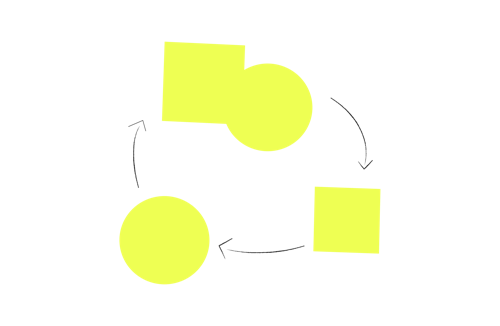Why app marketers should continue investing in retargeting
October 04, 2021

Remerge is a demand-side platform (DSP) that helps mobile businesses increase revenue from their existing app users by keeping them engaged with personalized mobile ads. The company has also enhanced its product for today’s IDFA-less future, providing clients solutions for user acquisition on no-ID traffic and incrementality measurement.
Pan Katsukis shares his thoughts on the state of the mobile advertising industry, in-app retargeting, and the early days of Remerge. The complete interview is part of Remerge’s Apptivate podcast series which is hosted by Tommy Yannopoulos, Director of Sales, Americas.
Pan, tell us about how you got to where you are today?
I started out in the mobile industry back in 2004, when there was no real smartphone out there. In 2008, I co-founded my first company, madvertise, which is a European ad network. We were one of the first mobile programmatic platforms in the market. I was its Chief Product Officer for 6 years and during that time I learned a great deal about the ad tech industry.
In 2014, I co-founded Remerge. Our aim was to solve the retention problem in the mobile industry; advertisers were spending a lot of money on user acquisition, but not many people were using their apps. We set out to create an easy and scalable product to overcome this issue. Our vision was to leverage the programmatic infrastructure and provide scientific insights into the performance of campaigns with the use of incrementality. These areas are still two of our biggest product offerings.
What inspired you to build a company like Remerge?
Our ultimate goal was to create an environment where everyone loves coming to work. Why is this important? Well, humans are at the heart of good marketing, and how people feel is a huge part of a company’s culture. The experience and results we deliver for customers are inherently better when people enjoy their tasks and their place of work. We are very open and transparent at Remerge. For instance, employees always have access to our financial numbers, how we are spending money, what’s in the bank, and the reasons behind why we make tough decisions.
When we thought about what we wanted to do as a business, it came down to three main elements. The first was to ensure our tech was a clear differentiator. The second was that we could scale globally. And the third was building a company that could adapt to a fast-growing market.
« The ways app marketers interpret campaign results have changed, so they must test and learn to prepare themselves for the future. »
Pan Katsukis
What changes will marketers face when adapting to life with ATT?
The biggest challenge for app marketers is rethinking their infrastructure and setup with ATT. SKAdNetwork is evolving as a new standard and works differently from other known attribution providers. The ways app marketers interpret campaign results have changed, so they must test and learn to prepare themselves for the future. There is a lot of uncertainty in terms of where to spend budgets, but I think the opportunity is big. Even if marketers have a strong base of iOS users using the newest version of the operating system, there’s still an extremely valuable audience to tap into and they cannot simply stop spending on iOS.
Also, there are tools such as incrementality with causal impact that can overcome the limitations of SKAdnetwork. This works on no-ID and marketers can already use it without looking at SKAdNetwork and all the problems attached to it.
What does incrementality provide that SKAdNetwork does not?
Incrementality has been on the rise for several years now and I believe the majority of marketers who have a 6-digit monthly marketing budget have been looking into this methodology. The benefit of this methodology is that it provides performance results on a scientific basis. For example, marketers can discover if a specific campaign really drives incremental value or if customers would have converted without the campaign. This year, we’ve worked with some of our clients to test incrementality measurement on no-ID and have achieved impressive results.
What opportunities are available in the privacy era?
Right now there is a massive pool of valuable users. The price of no-ID inventory is 60% cheaper than ID inventory, so I would strongly advise app marketers to take advantage of this to test new approaches. We launched a post-IDFA dashboard in April and this offers freely available data to the market on important trends for bid requests, CPM changes, iOS version usage, and SKAdNetwork-enabled traffic. Marketers can use this to help plan their programmatic campaigns and ad spend.
What does a winning formula look like for a DSP in the future?
DSPs operating in the privacy-first world must adopt and embrace two things. One is science and technology. In the past, ID traffic was enough. But now, it’s imperative to look at and understand much more data. A DSP needs an intelligent contextual bidding setup and extremely high scale to test and learn everything about each bidding opportunity. Incrementality measurement is also key - this allows a DSP to understand if a marketing campaign is actually creating an impact.
The other element is humanity. Messaging, contextualizing, creating emotions, and engagement are all becoming more important. DSPs must understand a campaign strategy in detail, create the most engaging creatives, and place creatives in the right context for the user.
« The reality is that there is a long way to go before retargeting dies out - it is still a valuable marketing strategy. »
Pan Katsukis
Can you talk about the state of retargeting?
The impact of the iOS 14.5 rollout has not been as dramatic as we anticipated. In fact, at Remerge, we have seen much more business, more conversions, and more opportunities. Our retargeting revenues grew month over month in May, June, July, and August. Our dashboard shows that the number of ID bid requests is stable and has remained high since June. App usage continues to rise around the world and a solid retargeting strategy helps a business easily improve its marketing KPIs.
Why is the perception of retargeting different from reality?
I can understand why some marketers are a little hesitant when investing in retargeting campaigns, particularly with all the talk about the death of ID-based marketing. But the reality is that there is a long way to go before retargeting dies out - it is still a valuable marketing strategy. Marketers are losing out if they do not test in the new environment - this is true for no-ID inventory and for the remaining ID inventory.
Will revenues continue to grow or will ATT have a bigger effect?
We are at an adoption rate of 80% with the ATT framework for iOS. It will likely go to 90% or 100%, so we are nearing its peak. However, we are still able to run retargeting at scale . For those who are maxing out retargeting on iOS, performance is likely to go down - because they cannot scale as easily and reach more users. But there is a real opportunity for marketers who are not doing any retargeting on iOS. They can still grow their business with this strategy.
Why do you think there are high levels of market consolidation?
There are several factors driving consolidation. The pandemic has accelerated the growth of app usage and digital advertising, and I think more businesses want to be a part of this trend. A focus on privacy has led to companies bringing more data under one roof and creating their own walled gardens. There is also more money in the market; financial institutions are buying and merging private organizations to create synergies and take them public.

Are there advantages to being an independent player in ad tech?
I think it really comes down to a company’s mission and why they are in the market - what problem do they want to solve? What do they want to achieve? The Trade Desk, for instance, is the entry point to programmatic for big agencies. They have been an independent business from day one and are now one of the most valuable ad tech organizations around. They are successful because they defined a very good value proposition that focused on their customers’ needs.
Also, it’s always been a stretch to tap into both the supply and demand side of the industry. There is a conflict of interest: who should a company serve more? Publishers or advertisers? It’s important to find a compromise and balance. It didn't work out for companies like Millennial Media or Rocketfuel, but maybe today’s ad networks can address this situation in a better way.
What excites you about the future of Remerge?
This is an exciting phase for us. The topic of privacy is everywhere and it is shaking up the market. We have always been at the forefront of privacy. We are a data processor, which is the highest privacy class under GDPR. We have never mixed customer data or created device graphs by collecting data from different sources. We don’t use or store data on AWS; we have our own bare metal server infrastructure set up all over the world. We put all our resources into building great solutions and results for app marketers.
The state of retargeting in the privacy-first era
Listen to the full conversation with Pan and Tommy by tuning into episode 100 of our Apptivate podcast: The State of Retargeting in the Privacy-First Era





